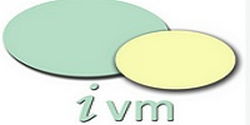Copy of `Knotweed UK - Knotweed glossary`
The wordlist doesn't exist anymore, or, the website doesn't exist anymore. On this page you can find a copy of the original information. The information may have been taken offline because it is outdated.
|
|
|
Knotweed UK - Knotweed glossary
Category: Agriculture and Industry > Knotweed and environment
Date & country: 06/04/2012, UK
Words: 60
|
AnnualPlants that complete their entire life-cycle, from seed to reproduction to death, within one year.
ApexThe tip of a plant root or shoot.
AxilThe point on a plant leaf where the upper side of the petiole joins the stem.
BackfillMaterial used to refill an excavated area.
BiennialWhen the lifecycle of a plant, from germination, flowering to death, occurs in two years.
BladeEither the whole plant leaf, excluding the petiole, or all parts of the leaf except the midrib.
ContaminatedTo be impure or unclean by contact or mixture.
CordateHeart-shaped. Used to describe the shape of some plants
CrownThe base of an herbaceous plant where roots or rhizomes and aerial stems or resting buds meet. Also used to describe the top of a tree, including the branches and leaves.
DefraDepartment for Environment, Food and Rural Affairs. DEFRA (or Defra) is the UK Government department responsible for environmental protection, food production and standards, agriculture, fisheries and rural communities in England. Concordats set out agreed frameworks for co-operation between it and the other, devolved, administrations of the UK.
DioeciousBearing male or female flowers on different plants. This is a way of avoiding self-fertilisation (Japanese knotweed is an example of a dioecious plant species).
DispersalThe movement of seeds away from the parent plant, e.g. by wind or birds.
Dormanttemporarily inactive: dormant buds; dormant seeds.
EcologyThe study of organisms in relation to their environment.
EPAEnvironmental Protection Act
Eradicationact of annihilating, destroying, or erasing; destruction; extermination
EvergreenA plant (often tree) having green leaves throughout the year.
FloraThe total of plant species in a particular region, country, continent etc.
FoliageThe leaves of a tree or plant, or of many trees or plants.
GeotextilePermeable fabrics which, when used in association with soil, have the ability to separate, filter, reinforce, protect, or drain.
GerminationThe first stage in the growth of a plant seed into a seedling. Germination begins with the seed absorbing water and ends with the production of the first true leaves.
GlabrousSmooth, hairless. Often used to describe the surface of plant leaves and stems.
HabitatThe place or kind of place in which an organism, or community is found.
HerbicideA chemical substance used to destroy or inhibit the growth of plants, especially weeds.
HybridA plant resulting from the cross-fertilisation of two different species, subspecies or varieties.
InflorescenceA plant shoot containing flowers and no leaves.
IntegratedTo make into a whole by bringing all parts together; unify.
InternodeThe space on a plant stem between two nodes.
Invasiveinvading, or tending to invade; intrusive.
LaminaThe parts of a leaf on either side of the midrib.
LeafA plant organ whose function is photosynthesis and transpiration. Leaves are produced from buds on the stem.
MidribThe central vein of a leaf.
NativeThis refers to a plant that grows in the same habitat in which they originated. Plants can be native to a continent, state, or region.
NodeThe point on a plant stem from which a leaf grows.
OppositeThe arrangement of two leaves which arise at the same node, on either side of a plant stem.
OvuleThe unfertilised seed of a plant.
PanicleA branched flowerhead.
PeduncleThe stalk of a group of flowers.
PerennationThe survival of an individual plant, or of a dormant plant organ, over successive years or during unfavourable seasons.
PerennialA plant lasting 3 or more seasonal cycles.
Pernicious Causing insidious harm or ruin; ruinous; injurious; hurtful.
PesticideA broad term that refers to any device, method, or chemical that kills plants or animals that compete for humanity's food supply or are otherwise undesirable.
PetalAn often brightly-coloured modified plant leaf, to attract pollinators.
PetioleThe stalk of a leaf, which joins it to a node on the stem.
pHA measure of the alkalinity or acidity of a medium. Neutral is represented by 7; with lower figures indicating increased acidity and higher figures, increased alkalinity.
PhotosynthesisThe manufacture, fuelled by solar energy, of complex organic molecules within the green tissues of plants, from the raw materials, carbon dioxide and water.
Regenerateto renew or restore (a lost, removed, or injured part).
RhizomatousBearing specialised stems, rooting and shooting from the nodes.
RhizomeA stem that extends by growing underground, bearing buds that produce aerial shoots and adventitious roots. This is a way of vegetative reproduction and perennation, whereby the extending rhizome eventually develops into groups of new plants.
RiparianOf or inhabiting a riverbank.
RosetteLeaves radiating from a single crown, at ground level.
RuderalApplied to plants which inhabit old fields, waysides or waste land.
StamenThe male pollen-producing organ in a flower.
StemThe main ascending axis of a plant; a stalk or trunk.
StigmaThe pollen accepting organ in a flower.
TubersSwollen, fleshy, usually underground stems of a plant, such as the potato, bearing buds from which new plant shoots arise.
VegetationAny or all of the plants of an area or a region.
VeinOne of the many lines which can be seen on the surface of a leaf, marketing the position of the vascular bundle.
WeedA plant considered undesirable, unattractive, or troublesome, especially one growing where it is not wanted.
WQM1Water Quality Management form used for application of herbicides adjacent to a watercourse

